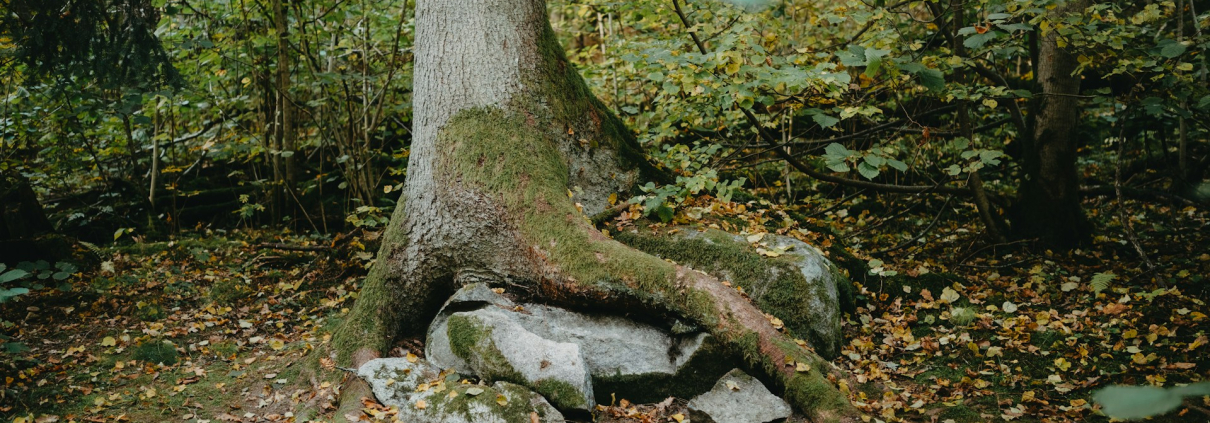Dealing with Overgrown Trees? Here’s What to Do
Overgrown trees can pose a variety of challenges for homeowners. They may block sunlight, affect the health of lawns and gardens, and even pose safety risks with their sprawling branches. Recognising when a tree has become too large is the first step towards ensuring your property remains safe and thriving.
Taking care of overgrown trees doesn’t have to be difficult. Several effective techniques can help control growth and keep trees healthy and attractive. Knowing when to get professional help can also make all the difference, especially when safety is a concern. Ensuring your large trees are well-managed will enhance your property and let you enjoy your outdoor space without worry.
Recognising the Signs of Overgrown Trees
Overgrown trees can lead to various issues for the trees themselves and their surroundings. Recognising the signs of overgrowth is the first step in effective tree management. One clear indication is branches growing too close to buildings or power lines, which can be dangerous, especially during storms. Another sign is a thick canopy that blocks sunlight from reaching the ground, affecting plants and grass that need light to grow.
An overgrown tree might also show signs of poor health. Look for dead or dying branches, increasing the tree’s vulnerability to pests and diseases. Additionally, if you notice many leaves constantly dropping or branches that appear weak and brittle, the tree may need attention.
Other signs include:
– Trees with branches rubbing against each other, which can cause wounds.
– A crowded appearance, making the tree look dense and unkempt.
– Branches that extend beyond a tree’s natural shape.
Understanding these signs helps you address potential problems early, ensuring the tree remains healthy and your property stays safe. Early detection allows you to take action before overgrowth becomes a major issue.
Assessing the Impact on Your Property
Overgrown trees can have a significant impact on your property, affecting everything from safety to aesthetic appeal. One major concern is the risk of branches falling during strong winds or storms, which can damage roofs and vehicles or even injure someone. This danger is heightened if the tree is already weak due to disease or structural issues.
The presence of overgrown trees can also interfere with utilities. If branches reach near power lines, they might cause outages or hazards that require immediate attention. Beyond safety, aesthetic considerations play a role. An overgrown tree can overshadow the appealing look of a garden or block architectural features.
Moreover, dense canopies can create excessive shade, hindering the growth of other plants and causing grass to turn yellow due to lack of sunlight. This imbalance can lead to less vibrant outdoor spaces and affect the overall health of your yard.
For some, overgrown trees might disrupt plans for landscaping or garden layout. They can impose constraints on design choices, making it difficult to enjoy the available space fully. Overgrown roots might also interfere with underground pipes or damage foundations, leading to unexpected repair costs.
Effective Tree Management Techniques
Managing overgrown trees effectively is key to maintaining a healthy and attractive property. One of the primary methods is regular pruning, which helps keep tree branches from becoming too heavy or dense. Pruning involves cutting back branches that are dead, diseased, or too long. This improves the tree’s shape and allows more light and air to reach the interior branches, reducing disease risk.
Another technique is thinning, which involves removing smaller branches or shoots. Thinning allows you to manage the tree’s growth without altering its natural shape too much. This can be particularly useful for trees that are crowding other plants or structures on the property.
For trees that grow large quickly, consider crown reduction. This involves trimming the top and sides of the tree to decrease its height and spread. It’s a good choice when dealing with trees that are approaching power lines or overhanging roofs. However, it’s important to do this carefully to prevent stress or damage to the tree.
Regular inspections can prevent small problems from becoming major issues. Look for signs like cracked branches or leaning trunks and address them quickly. This proactive approach keeps trees in check and prevents future hazards. Mulching around the base also supports tree health by retaining soil moisture and reducing weeds.
Safety Precautions and When to Call the Professionals
Working with trees can be dangerous, especially when dealing with large branches or trees close to structures and power lines. Safety precautions are essential to prevent accidents and ensure successful tree management.
First and foremost, always use the right tools for the job and ensure they are in good condition. Wearing safety gear like gloves, goggles, and hard hats is crucial when handling heavy or sharp equipment. Ladders or scaffolds must be stable and placed on firm ground to avoid falls.
Before starting any tree work, assess the area for potential hazards such as unstable ground or wildlife nests. Ensure there is a clear exit path in case of falling branches or tree trunks. It’s important to remain aware of your surroundings during the process and never work alone if the task is challenging.
There are times when calling in professionals becomes necessary. Large trees or those near power lines require expertise and specialised equipment. High branches or heavy limbs pose a significant risk and should be handled by trained professionals who know how to approach the task safely and efficiently.
Also, in cases where trees have diseases or pests that you can’t identify, professionals can provide the best solutions. They have the knowledge to diagnose and treat these issues without causing further harm to the tree or the environment.
Conclusion
Managing overgrown trees requires a thoughtful approach to ensure they contribute positively to your landscape without causing problems. Using proper tree management techniques and focusing on safety, you can keep your trees healthy and your property safe. Whether it’s regular pruning or professional interventions, these steps help you control your greenery and prevent unwanted surprises. Making informed decisions about tree care reflects your commitment to a tidy, thriving landscape.
At TPS Tree Services, we understand the importance of effective tree management. Our experienced team is ready to assist with your tree care needs. Whether you need help with pruning, assessing tree health, or managing large trees safely, we provide reliable tree services in Brisbane that are tailored to your requirements. Contact TPS Tree Services for expert guidance and to ensure your trees remain a beautiful and safe part of your environment.




